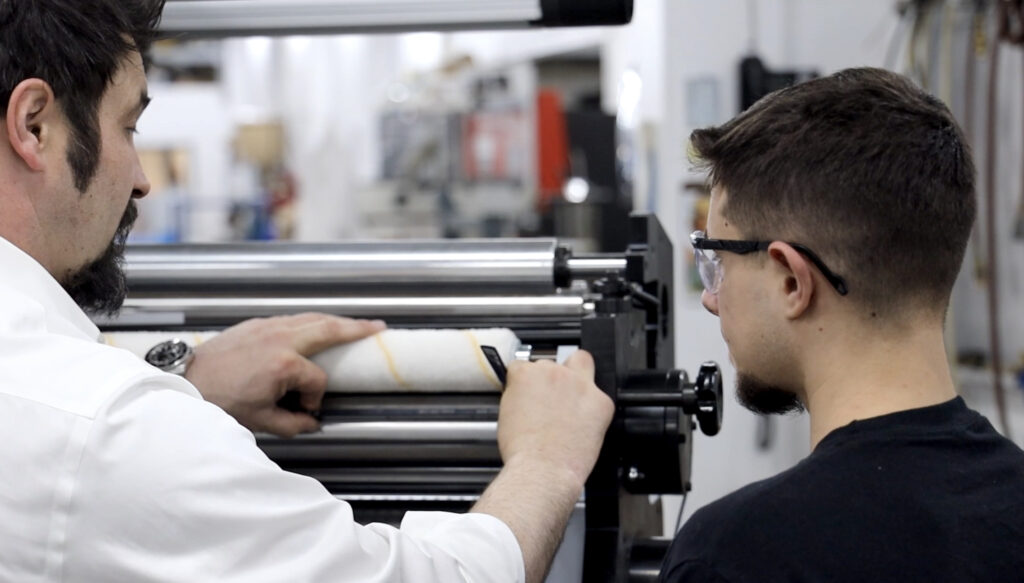Adding windows to cartons allows brands to showcase their products to consumers so they can see and experience the product they are purchasing. Windows on cartons are common on bakery goods like a beautifully decorated cupcake, pasta boxes so you can see the size and shape of the pasta inside, and other products like facial tissues which allow consumers to reach in and pull out one at a time.
Adding windows to a carton design is done with specialized equipment and either an inline or offline process. Manufacturers often wonder what the difference is between these two window-making applications and whether they should choose inline or offline for their window patching process.
Inline Windowing on Cartons
Inline window application processes combine both processes of adding a window along with folding and gluing all in one pass. This saves from needing two distinct operations of someone running a window patching machine and another person running a folder and gluer. This greatly reduces the overall production time particularly if the windowing and folding/gluing speeds are similar. This helps some packaging manufacturers to meet just-in-time (JIT) production requirements. Other advantages of in-line windowing include less waste, simplified scheduling, and reduced floor space.
Offline Window Patching on Cartons
In an off-line window patching process, the cartons are first die-cut and then transferred to a windowing machine, and then transferred again to a folding/gluing process. In an off-line process, the window patching is independent and requires separate machine operators. There are times when this is still beneficial such as when the overall job completion time can be reduced. If off-line window patching operates in a multi-lane process and the folder/gluer also runs very fast, the process could be completed faster than on an inline window patching system.
Offline window patching may also make more sense when packagers have a need to run window patching flat-packed work or on multiple folders/gluers.
What Type of Film Is Best for My Window Patching?
When designing cartons with windows, choosing the best type of film for your window can make or break the entire project. A very common film is polypropylene as it is quite versatile and relatively inexpensive. Polyester is often the preferred choice for higher-end products due to its clarity and strength, although it is more expensive than polypropylene. Breathable films such as those found on bakery products that are sugar coated will perform best with the acetate type of film. A film supplier will work with the manufacturer or packager to evaluate the best type of film for the window patching project.
What Type of Equipment Do I Use for Window Patching?
Manufacturers of window patching machines offer both in-line and off-line windowing solutions and can help customers to choose the most efficient and economical solution for their needs. Depending on the type of windowing project, additional equipment may be necessary such as adding a slit in the film on tissue cartons or applying rigid windows that wrap around multiple sides of the carton.
Tamarack® Window Patching Solutions
Tamarack Products® offers both in-line and off-line solutions, Tamarack’s Vista® Window Patcher is an inline window patching system that meets the needs of both short-run or high-volume folding carton with windowing projects. Tamarack’s Vista® affixes susceptor patches, rigid windows, and liners efficiently with excellent registration accuracy. This in-line window patching system provides quick setup with the standard configuration for windowing up to 14 inches wide, with options for windowing wider systems up to 18 inches if necessary.
Tamarack Products® has been a leading manufacturer of high-quality web finishing equipment for more than 50 years. We design, engineer, and manufacture quality equipment for window patching, as well as for creating integrated forms and labels and RFID insertion solutions. Contact us with any questions and to improve your next window patching project.





